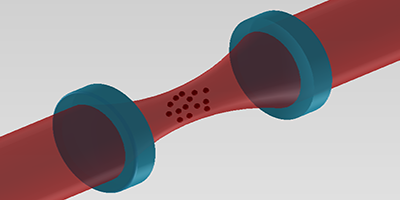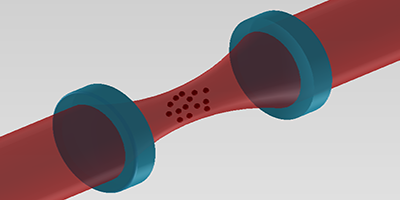Atom Count Sets New Record
To measure a physical quantity with high precision, one can carry out an experiment using a large number of probes, such as atoms or photons. The measurement precision generally improves as , where is the number of probes. However, if the probes are in a quantum-mechanically entangled state, the precision could scale as fast as —a limit set by Heisenberg’s uncertainty principle. To exploit this quantum advantage, researchers need an accurate method to count the number of entangled particles in specific quantum states, which is challenging when is large. In Physical Review Letters, Hao Zhang at the Massachusetts Institute of Technology, Cambridge, and colleagues demonstrate a quantum-state-selective scheme that allows counting up to atoms.
The authors confined an ensemble of rubidium atoms within an optical cavity, trapping the atoms in the antinodes of a standing wave generated by an infrared laser. The resonant frequency of the cavity shifts by an amount proportional to the number of atoms. With a second laser, the team monitored this frequency shift to determine the total number of atoms. The same scheme can be adjusted to only count atoms in one of the hyperfine states of the rubidium atom.
The authors optimized their detection techniques and eliminated noise sources, allowing them to count, with single-atom accuracy, up to atoms, and up to atoms in a given hyperfine state. By enabling the use of larger ensembles of entangled particles, this quantum metrology scheme may help boost the precision of techniques such as frequency calibration by atomic clocks. – Matteo Rini





